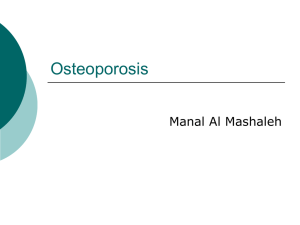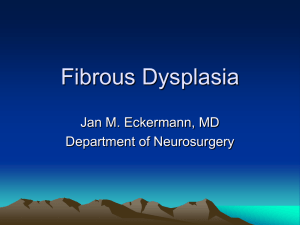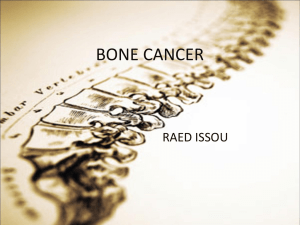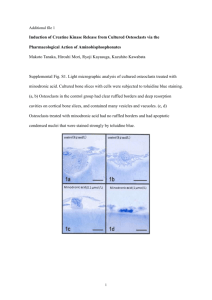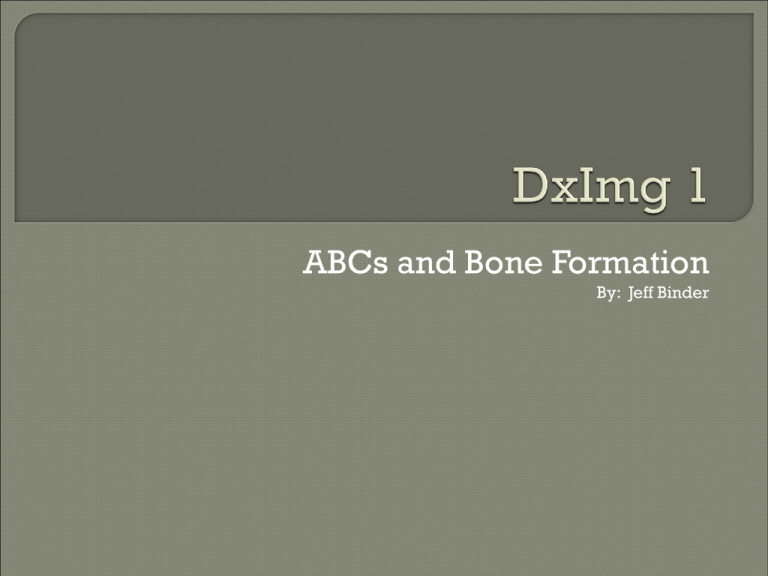
ABCs and Bone Formation
By: Jeff Binder
Performed
first (usually by the tech)
ABCs
• Anatomy: Is entire region of anatomy on the film
• Bone: Search for signs of patient motion. Big
white lines and small white lines.
• Cartilage: Check joint spaces are not obscured
by positioning errors
• Soft Tissues: Evaluate technique of the soft
tissues
Performed
by a Doctor
ABCs
• Anatomy: sub inventory of all anatomical parts
(pedicles, Tp’s, sp’s, etc)
• Bone: Cortical and trabecular bone. Look for an
increase or absence of either
• Cartilage: Signs of arthritis, injury, or anomaly
• Soft tissue: Regional inspection of soft tissue for
pathology
Imaging
is for documentation NOT
education
Every xray must be interpreted to reach
a diagnosis or conclusion
ALWAYS do an exam prior to taking
xrays
A
written interpretation of the study
Part of the patients permanent record
Signed and dated by the individual doing
the interpretation
All radiographic studies must be
interpreted to reach a diagnosis or
conclusion
Verbal rendition of visual image
Medico legal communication
• Insurance company, work comp, attorneys
Provide a standard for comparison
Part of a patient’s permanent record
• A report may replace lost films
Professional communication
Expedite treatment by highlighting indications and
contraindications for treatment
1.
2.
3.
4.
5.
6.
7.
Stationary
Patient Information
Radiology Information
Technique (optional)
Body (also called Findings)
Impression (also called Conclusion)
Recommendations (when applicable)
Name and address of the clinic or
individual who is creating the report
Joe Bob’s MRI clinic
15 s. main street
Chesterfield, MO 63017
Patient’s
full name
Address
Date
of birth (sometimes patient age is
listed also)
Sex
Medical record number (or patient
number)
All
views performed for interpretation
must be listed here
• Ex: cervical 3 view would state “AP, Lateral and
AP open mouth”
Location
and dates films were taken
Patient’s clinical history and reason for
taking the films can be listed here as well
This is optional. If the interpreting Doctor
is supplied with the technique for each
film he/she can list them in this area.
Some doctors list these on special views in
case they need to be repeated at a later
date.
This is where the doctor will list everything
he finds through the ABCs method.
This is the description of findings. There is
no diagnosis here. Basic facts about the
film and findings are listed.
EX: “A geographic lucency is seen in the proximal right
tibia measuring 2.1 centimeters in diameter.”
A
short, concise list of important radiologic
finding and diagnoses based on previous
narrative descriptions (body).
List them from most importance to least
Avoid long lists
Medical diagnoses and terminology should be
used
Very critical as a percentage of Doctors will not
read the full report.
EX: “Condroblastoma in right proximal
tibia”
Optional
Basically
anything the Radiologist wants
the Doctor to pay attention to
Contraindications
• “Low force technique recommended due to
fracture”
Additional
performed
exams that may need
• “Recommend MRI to further evaluate
surrounding soft tissues.”
Intramembranous:
Adding bricks to a
house
Enchondral: Framework of a house
Throughout
life
Adding layers of bone
Initiated by proliferation of mesenchymal
cells
Flat bones developed by this (skull,
pelvis)
No preformed cartilage
Used for BONE REPAIR
Increases WIDTH of bone
Formed
by primary ossification centers
Use non-ossified matrix as framework
Osteoblasts and osteoclasts form and
become embedded
Cell death is followed by ossification
Increases LENGTH of bone
Epiphysis:
articular surface, produces
and supports articular cartilage
Apophysis: attachment site for ligaments
and tendons (trochanters, tuberosities,
tubercles)
Metaphysis: Most metabolically active,
focus for disease and trauma, indolent
blood flow (very slow, stagnant blood)
Diaphysis: Shaft of long bones, act as
lever, 50/50 cortical and medullary bone
Physis:
Growth plate, epiphyseal plate,
bone growth center
Growth arrest line: line formed by
growth plate showing end of bone
growth. White on xray
ZPC (zone of provisional calcification):
Most mature layer of the growth plate.
Least Mature layer of the metaphysis
Periosteum: Part of intramembranous
formation, mediates repair, sensitive to
Gh,
• Sharpe’s fibers anchor periosteum to bone in
adults. Periosteal lifting in adults is SERIOUS
Calcium Regulators
• Parathormone, 1,25-dihydroxy vit D, Calcitonin
Maturation hormones
• Glucocorticoids, insulin, t3/t4, androgen,
estrogen, Gh
Growth factors
• Somatomedin, epidermal gf, platelet-derived gf
Local Factors
• Prostaglandin E2, interleukins
Ions
• Calcium and Phosphorus (2:1 ratio, inverse)
Increase
blood Ca+
Bone
• Softens bone to allow osteoclasts to work more
efficiently
• NO RECEPTORS ON OSTEOCLASTS
Kidney
• Increase Ca+ reabsorption at the DCT
Gut
• Activation of Vit D3 to increase absorption in the
small intestine
Decreases
blood Ca+
Stimulates osteoblasts
• ACTS ON RECEPTORS
Considerable
effect on growth plates
Hyper or hypo = stunted growth
• Opposite mechanisms
Estrogens
more responsible for growth
plate closure




